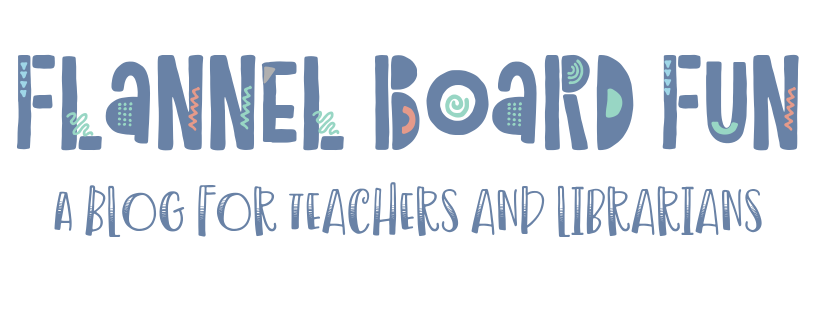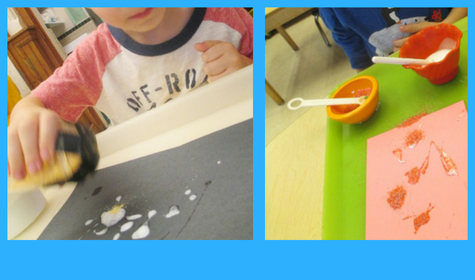I loved so many things about being a preschool teacher that it's hard to come up with favorites. But one of my most-loved areas of the classroom was definitely the art area. Always busy and usually messy, this area of the room was full of so much creativity, conversation, and discoveries! It took me many years to get my space and ideas organized in just the right way so that children could work independently, have access to varied, high-quality materials and tools, and engage in experiences that were interesting to the many little personalities in a group of 2, 3 and 4 year olds.
Communicating the 'why' of our open-ended art to the families was another issue. There are crafts, and then there is creative art exploration (people call it process art now.) My preference is creative exploration, but that's not always what parents know or understand. I liked to get it all out in the open from the beginning of the year so anyone expecting cut out snowmen or construction paper apple trees would understand why instead they were receiving globs of yarn glued to a stick, one stripe of paint on an easel paper, or an envelope full of tiny cut up scraps!
Here's the letter I sent out each year to my three year old class. I hope you find something useful in it!
------------------------------------------------------------------------------------------------
Our Art Program
The art program in our classroom is Developmentally Appropriate and child-centered. This means that we provide materials, and the children are able to use them in unique and creative ways, at their own pace. It means that your child may sometimes come home with artwork, and sometimes come home with nothing, because it will be his or her choice to work with art materials or not. It means that we focus on the process of art, rather than the product. It means that what your child does at one of our art areas may be completely different than what another child does with the exact same materials. Additionally, because we know how important it is for children to repeat activities, you may see the same art activities coming home day after day. Children learn by doing and through repetition, so we make every attempt to provide repeated experiences.
When your child does artwork, and other work in our classroom, we use objective language when we talk to them about that work. We will be sending home and posting (on the Good Information section of our bulletin board) a note with some examples of the kinds of words we use with them, but basically, we “Say What We See.” By using objective language, we help children form concepts, develop vocabularies, and grow in self-awareness.
We have three art spaces in our classroom, which are all grouped near each other and the sink. They are the easel, the open art table and the round art table.
The easel: We provide an easel in the classroom because different visual perception and eye-hand coordination skills are developed when painting here, versus painting on a flat surface. The easel is open every day, and we do not limit the children as to how often or how long they paint here. When we provide different consistencies of paint, various scented paints, scraps of different weights and textures, contrasting colors, shades and tints, and complementary colors, the children become aware of and attuned to these qualities and properties.
The Open Art Table: The long rectangular table is our Open Art Table. This table is also open every day. The shelves contain open-ended materials that are easy for the children to use independently. We provide paper, scissors, crayons, stickers, glue and collage materials. As the year goes on, we add baskets of lids and tubes and small boxes, along with masking tape, string, and ribbon. This is where your child might create things that look like “junk” to you ;-). Again, it is the process, and not the product that is important. As your child tries to cut a piece of paper or use masking tape, important fine muscles are developing. As she makes choices about what colors of paper or crayons to use, she is making color discriminations and planning in advance. As children work here, they might also experience problem solving, decision making, inventing, and imagining, and they develop an awareness of linear patterns, color contrasts, spatial relationships, cause and effect, texture, proportion, etc.!
Round Art Table:
Our third area is the round art table. This is where the teachers will introduce a new material or activity for the children to explore. It may involve many of the things that the open art table will eventually contain. This is where children can paint on a horizontal surface. Sometimes we want to expose the children to an activity that requires a little more adult supervision, so we present it at this smaller table. With our emergent curriculum, we may link an art activity to an interest we see happening in the classroom (for instance if someone is extremely interested in cars or other vehicles, we may invite them to paint with the wheels of cars; if someone is always playing with the animals, we may introduce painting with the feet of the toy animals; if balls are a constant toy in use on the playground, we might experiment with painting with various sizes of balls…) Sometimes we may simply introduce a fun, messy activity that we hope the children enjoy. In all cases, the end product is not what is important. Rather, the process that each child becomes involved in is what holds the most meaning…
--------------------------------------------------------------------------------------------------



















